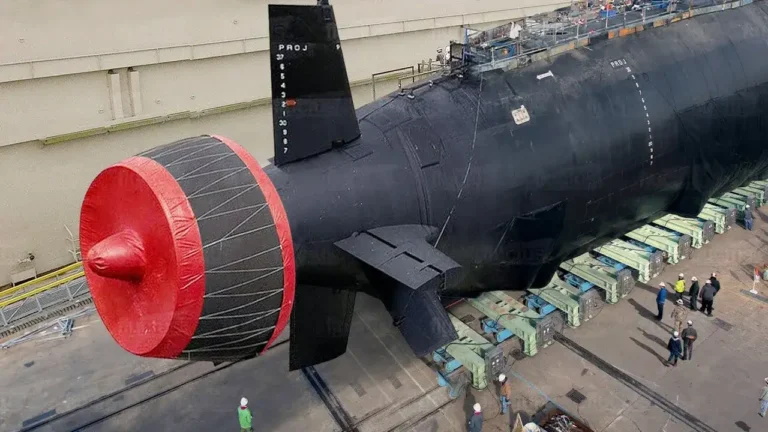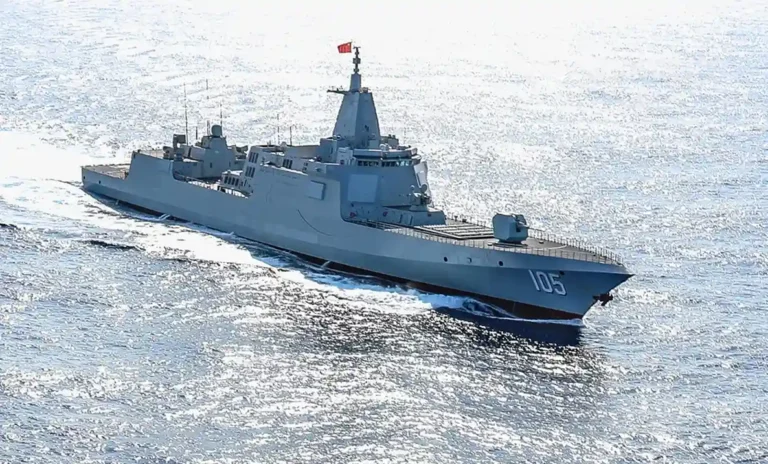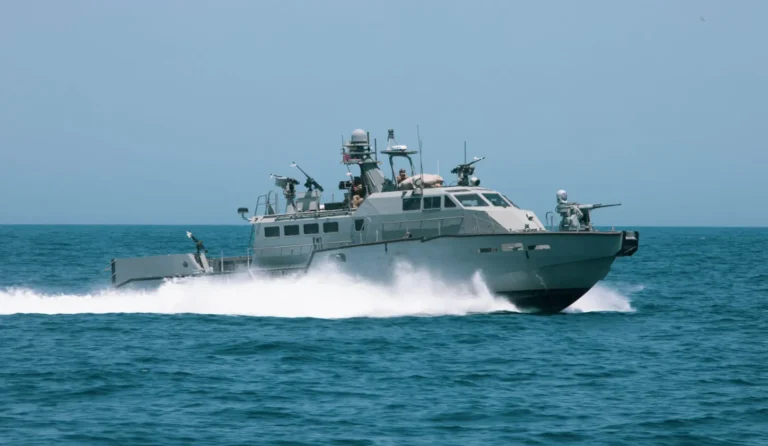Follow Us:
Share
Table of Contents:
Defense Feeds – On this occasion, we will begin to see the history of the evolution of the U.S Navy Destroyer. Destroyer, a fast, maneuverable, long-endurance naval vessel intended to escort larger vessels in a fleet, convoy or battle group.

They were originally manufactured in the late 19th century by Fernando Villaamil for the Spanish Navy as a defense against torpedo boats.
From the first U.S. destroyer, the Bainbridge Class commissioned in 1902 to the famous ships of World War II to the Zumwalt Class, the U.S. Navy’s destroyers have evolved from small, fast, close-in surface combatants to multi-mission offensive and defensive warships that can operate independently or as part of strike groups.
As a result, larger and more powerful guided missile destroyers were developed, which were more capable of operating independently.
The Evolution of the U.S Navy Destroyer
We know that each class of destroyer is unique in its own right, Therefore, let’s take a look on “The top 10 of U.S Navy Destroyers”, without further due, let’s see the explanation below!
1. Bainbridge Class 1899
The Bainbridge Class destroyers were the first American destroyers. This was the U.S. Navy’s first class of a new type of small warship the torpedo-boat destroyer.
In the 1880s, the game-changing self-propelled torpedo was invented, forcing the world’s navies to find a defense for fleets approaching hostile coasts defended by torpedo boats.
One answer was a small gun-armed ship, larger than the torpedo boat itself and capable of limited operations with a fleet on the high seas. For this reason, the torpedo-boat destroyer was born. The larger, more versatile, later versions were known simply as destroyers.
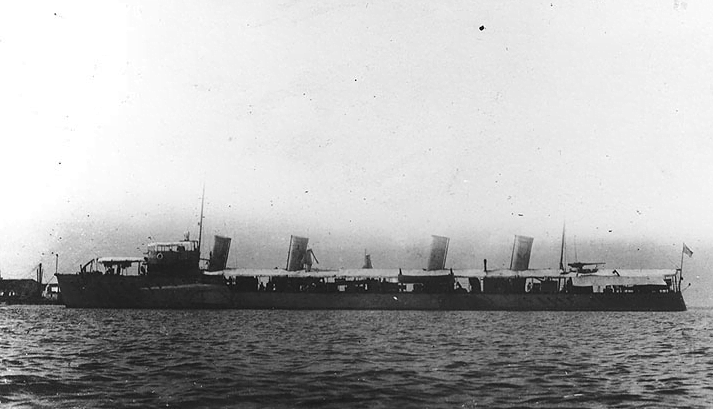
This ship has a length of 250 feet with a speed of 28.1 knots and displacement of 640 tons (fully loaded). This class is also equipped with the armament of 2×3 inches and 5x 6-pounder guns, 2x 18 inch torpedo tubes and Powered by Steam particularly four Thornycroft boilers.
Additionally, it can carry 75 crews. There were 13 ships of the Bainbridge Class, some of which served in the Philippines until 1917, in the Mediterranean during World War I, in the Atlantic as part of the Coast Squadron, and as guards in the Panama Canal.
2. Wickes Class 1918
The size of the U.S. destroyer classes began to increase to a displacement of more than 1,000 tons. These ships are the Wickes-class destroyers which are a class of 111 destroyers built by the United States Navy in 1917 until 1919.
The destroyer type was at this time a relatively new class of fighting ship for the U.S. Navy. The type arose in response to torpedo boats that had been developed from 1865, particularly after the development of the self-propelled Whitehead torpedo.
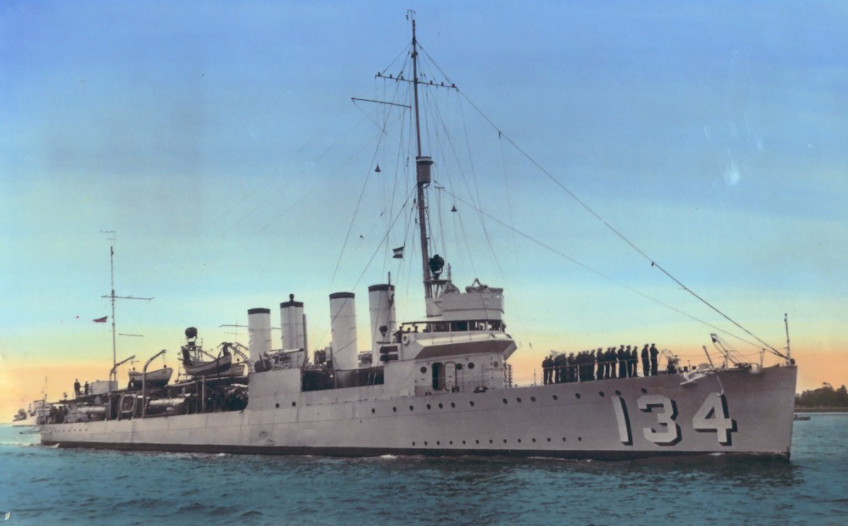
Let’s take a look on the detail of this ship. The ship is powered by a steam turbine has the speed of 35.2 knots and a length of 314 feet. It can carry 100 Personnel.
It also fitted with 4×4 inch guns, 2x 1-pounder guns, 12x 21 inch Torpedo Tubes with 2 of depth charge tracks and the typical armament of the preceding Caldwell Class destroyers with four 4-inch or 102 mm/50 caliber guns and twelve 21-inch torpedo tubes, but their torpedo capacity was much greater than before and anti-submarine armament was added during World War I.
3. Sims Class 1939
This class of destroyers was the last to be completed before the U.S. entered World War II. According to Norman Friedman in his book “U.S. Destroyers: An Illustrated Design History (Revised Edition),” the Sims class was the first to use the advanced Mark 37 Gun Fire Control System. This system enabled remote and automatic targeting of guns against surface ships, aircraft, and shore targets.

A notable note for the Sims class ships is that they were the last one-stack destroyers. This was because their larger boilers required the boiler rooms to be built adjacent forward and the engine rooms adjacent aft
The ship had a length of 348 feet, displacement of 2,293 tons (full loaded), and could reach speeds of more than 35 knots. This ship is also equipped with the armament of 4x 5 inch guns; 8×21 inch Torpedo Tubes.
Unfortunately, five ships were lost while en route to Pearl Harbor for repairs after being torpedoed by Japanese Submarine I-19 more than a month earlier.
4. Fletcher Class 1942
Fletcher Class destroyers were notably called Destroyer of WWII era. They were manufactured during World War II and the class was actually designed in 1939 as a result of dissatisfaction with the earlier destroyer leader types of the Porter and Somers classes.
The United States Navy commissioned 175 of Fletcher-class destroyers between 1942 and 1944, more than any other destroyer class, and they became the quintessential foundation for future destroyers due largely in part to a successful and efficient design: fast, powerful, enduring, and adaptable.
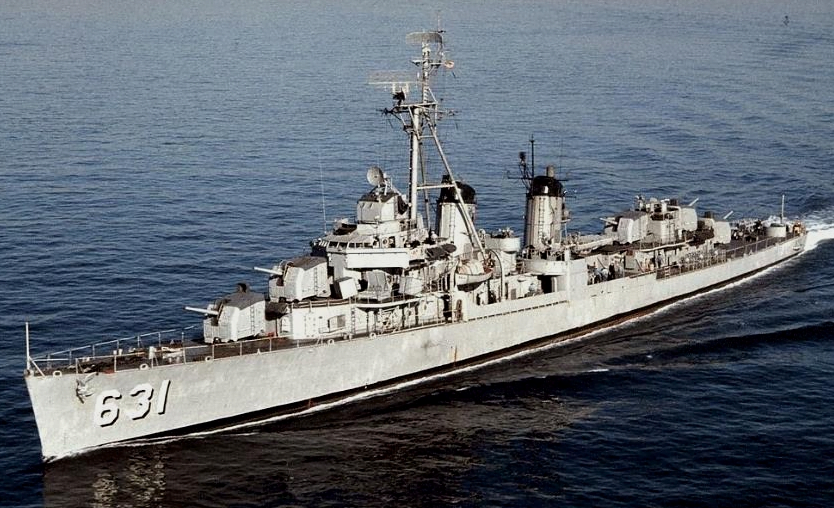
The ship with a length of 376 feet and a displacement of 2,500 tons (full loaded) could reach the speed of 36.0 knots.
This ship can carry 273 personnel and is fitted with a main armament of 5x 5 inch guns, 10×21 inch Torpedo Tubes, 6 times depth charge projectors, 2 times depth charge tracks, ten of 21-inch torpedo tubes.
These destroyers were dependable in anti-submarine, anti-aircraft, and surface warfare. The ships of this class also had a longer range, which made them ideal for service in the Pacific during the war.
Though these ships were strong, dependable performers, 19 ships of the Fletcher Class were lost during World War II.
5. Forrest Sherman Class 1955
Forrest Sherman Class were the first US post-war destroyers. This ship was commissioned in 1955 and served until the late 1980s. The ship with 418 feet long had a displacement of 4,050 tons (full loaded) and could reach the speeds of 30 knots.
The ship was armed with three 5-inch and four 3-inch guns, four 21-inch torpedo tubes, and one depth charge track. By the 1970s, the four 3-inch guns were removed from all ships and the torpedo tubes were replaced with two triple 12.75-inch Mark 32 torpedo tube mounts.

Their weaponry underwent considerable modification during their years of service. Four were converted to guided missile destroyers. On eight of the ships, the No. 2, 5 inch gun was replaced with an eight-cell antisubmarine rocket launcher to improve their anti-submarine warfare capabilities.
A variable-depth sonar system was also added. Those eight ships eventually became the Barry Class and the Forrest Sherman Class was the foundation for the Charles F. Adams Class destroyers.
Two ships of the class have become museum ships, nine have been sunk in training exercises, and the others have been scrapped or are scheduled to be scrapped.
6. Charles F. Adams Class 1960
The Charles F. Adams-Class was the first class designed specifically as a guided-missile destroyer. The design of these ships was based on that of Forrest Sherman-class destroyers.
Twenty-three destroyers were built for the United States Navy and were the last destroyers to use a steam turbine power plant. With a length of 437 feet, a displacement of roughly 4,500 tons, this ship could reach speeds of 30 knots and carry 354 Personnel.
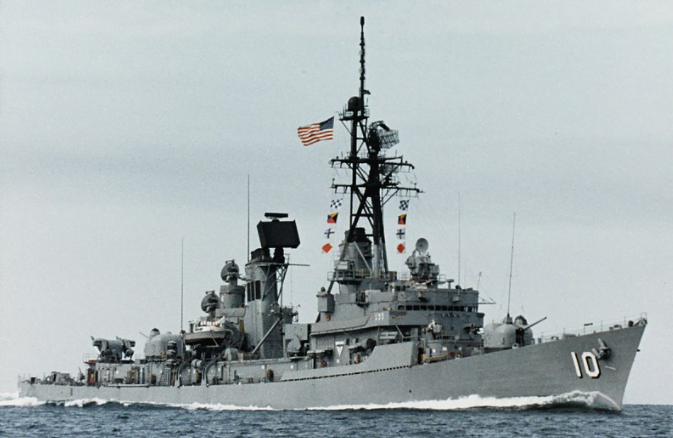
It is equipped with RIM Tartar surface- to-air missiles and 2 of 5 inches guns. Even though the ship incorporated some of the latest technologies of the time, it was evident later that the class could not fully deal with the advances in surface-to-air and guided missile technology.
The ships received the developed New Threat Upgrade along with other combat, weapon, sensor and communication system add-ons to increase the ships’ capability and survivability.
In the 1980s, only a few of the Adams Class ships would receive minor upgrades as the Navy waited for the Arleigh Burke Class to become operational and ready for service. On April 29, 1993, USS Goldsborough (DDG 20) was the last of the Adams-class to be decommissioned.
7. Spruance Class 1975
The Spruance class was originally designed for anti-submarine warfare and included some of the most state-of-the-art undersea detection technology.
This ship was developed by the United States to replace the many World War II–built Allen M. Sumner- and Gearing-class destroyers and was the major destroyer built for the U.S. Navy during the 1970s and 1980s.
The Spruance-class was also unfavourably compared to earlier U.S. designs which had more visible guns or launchers for the Standard medium range missiles.
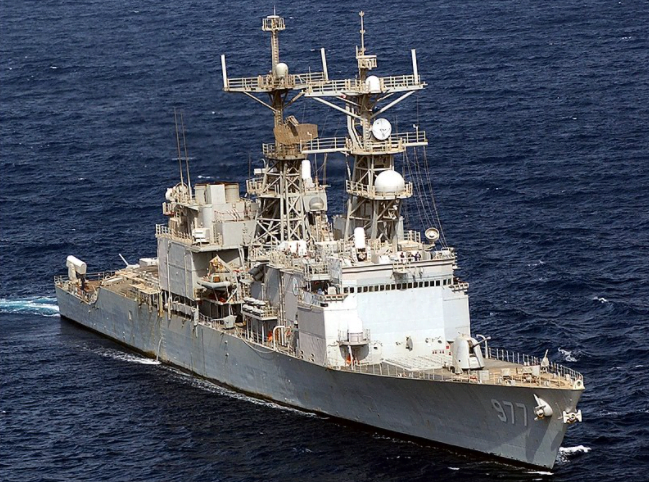
It is fitted with the armament of 2 of 5 inches guns, anti-submarine rocket launcher, Sea Sparrow and 2 of Mk 32 Torpedo Tubes. The USS Spruance (DD 963), was commissioned on Sept. 20, 1975.
It was the first class of destroyer to incorporate gas turbine engines. One of the largest of the destroyers was 563 feet in length, weighed 4,500 tons (fully loaded) and fit 250 personnel on board. The ships were able to reach speeds in excess of 31 knots.
8. Kidd Class 1981
The KIDD class are the most powerful multi-purpose destroyers in the fleet. With its lead ship commissioned in March 1981, the four Kidd Class guided-missile destroyers were based on the design of their predecessor the Spruance Class.
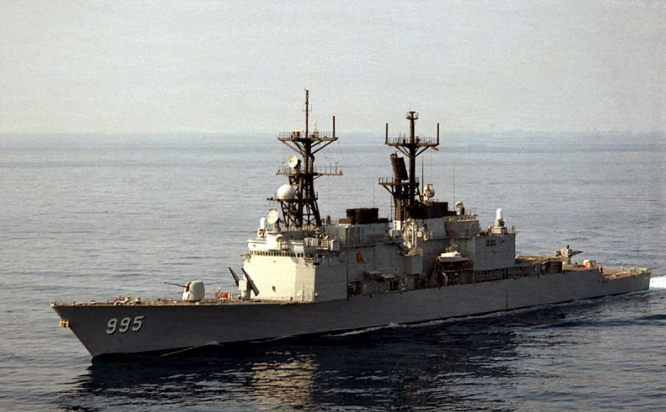
Their advanced air-intake and filtration systems were able to handle dust and sand that were common in the Arabian Gulf area of operations. The ship which was powered by gas turbine had a length of 563 ft, displacement of 9,783 tons (full loaded), and could reach speeds of 33 knots.
The ship is also facilitated with the Medium range standard missile, 8 of Harpoon Missile, 2 of Phalanx close in weapon system, 2 of medium range of MK 32 Torpedo Tubes and 1 of anti-submarine rocket launcher as their armament.
In addition, the ship carrying 363 personnel served as advanced multipurpose platforms that were vital in providing anti-submarine warfare and adding considerably enhanced anti-aircraft capabilities.
The class also served as a testing platform for the Aegis Weapons System (AWS). The last ship of the class was decommissioned in 1999. However, this didn’t conclude these ships’ active service.
9. Arleigh Burke Class 1991
The USS Arleigh Burke was commissioned in July 1991. The ship that is equipped with the Aegis Weapons Systems is also designed to incorporate shaping techniques to reduce radar cross-section and detectability. It can improve the likelihood of not being targeted by enemy weapons and sensors.

With the length of 505 feet, this ship is capable of engaging in air, surface and subsurface battles simultaneously using a myriad of offensive and defensive weapons designed to support maritime warfare.
This ship was powered by the Gas Turbine and was also incorporated with the armament of Mk 41 Vertical Launch System for Tomahawk & Standard Missile, Sparrow Missile of 2 Medium range, Vertical Launch Antisubmarine, 8 of Harpoon Missile, 2 of Closed In Weapon System, 6 of Mk 32 Torpedo Tubes, and 1 of Light Airborne Multi-Purpose System and lastly the Evolved Sea Sparrow Missiles.
The speed of the Burke Class is up to 30+ knots and can be occupied by 356 crews, more personnel in comparison of the previous ships.
10. Zumwalt Class 2015
The Zumwalt-class destroyer is a class of three United States Navy guided missile destroyers designed as multi-mission stealth ships with a focus on land attack.
For power and propulsion, the ship uses an integrated power system that’s designed with a 78-megawatt system. Another major difference from past ships is this ship is specifically designed for less crew, carrying around 148 personnel, and becomes the first US navy ship to use Integrated Power System.

The ship’s launching systems are uniquely different and allow the ship’s platforms to adapt to longer, heavier, and wider missiles of the future.
Additionally, the ship had a length of 610 feet, displacement of 15,907 tons, and could reach speeds of 30 knots. This ship is also featured with 4 RIM 162 Evolved Sea Sparrow Missiles, 1 of Tomahawk, or 1 of Vertical Launch Anti-Submarine Missile, 2 of 155 mm (6 in)/62 caliber Advanced Gun System.
Adding to the ship’s defences and its operational reach, this ship can house two helicopters at a time, primarily H-60s. However, its 150-foot flight deck is almost double the size of the flight deck on current destroyers and can land a wide variety of helicopters.
Zumwalt can also support three Vertical Take-off Unmanned Aerial Vehicles (VTUAVs) or Fire Scouts at a time. It has a capture system for the VTUAVs on the flight deck.
As you can see, the development of the U.S. Navy’s destroyers make them important players in maintaining freedom of the seas. They remain, and continue to be, essential warships capable of projecting power and supporting battle groups over sea, land, and air while remaining capable of sustained independent operations.
Share
Defense Feeds
Defense Feeds is publication focusing on informing, engaging, and empowering the world by providing accurate information from defense technology.
Powered by Defense Feeds © 2025 – All rights reserved.

